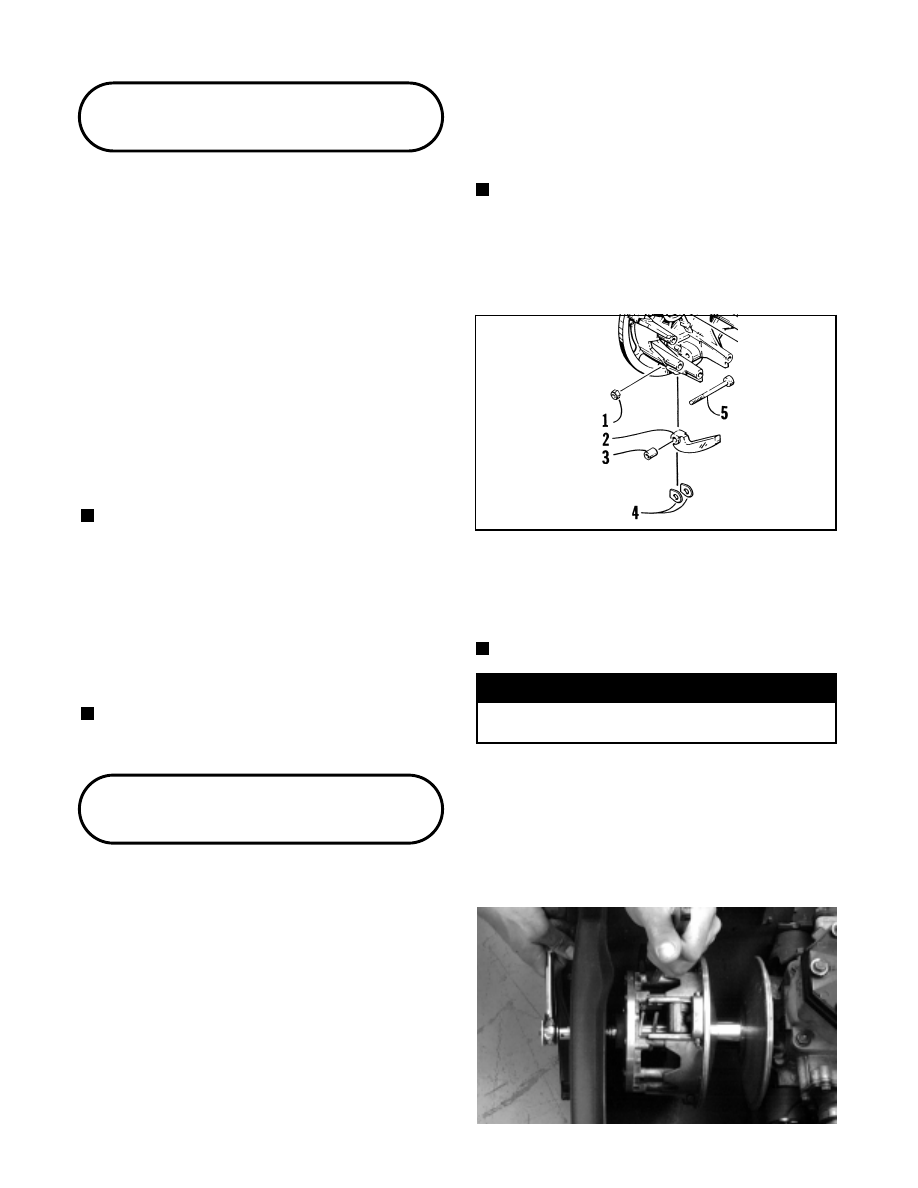Snowmobile Arctic Cat (2000 year). Manual - part 99

Drive Belt
The belt dimensions and construction are two factors
that influence the performance of the drive system. The
two belt dimensions that are important to the
performance of the snowmobile are the outside
circumference and the width. Both of these dimensions
will influence shifting characteristics.
If the drive belt is longer than specified, the drive clutch
and driven pulley will not have the full shift ratio. Also,
a too-long drive belt will cause poor acceleration and a
decrease in top speed.
If the drive belt is shorter than specified, the drive clutch
and driven pulley will have a different shift pattern
because they are in different ratios from those for which
they were originally matched. A too-short drive belt will
cause a loss in performance and a bog on engagement.
NOTE: A drive belt that is worn thin may produce
the same effect as one that is too long.
Drive belt construction has an influence on the way the
drive clutch and driven pulley will shift and on the
amount of power that will be transmitted through the
system. ONLY ARCTIC CAT DRIVE BELTS
SHOULD BE USED. Different brands of belts may not
have the same construction causing either more friction
or more slippage when the belt is wedged between the
sheaves and, thus, a loss of efficiency.
NOTE: A stiff belt causes a HP loss to the track.
As a belt warms up, it gets more flexible and
transmits power with less HP loss.
Drive Clutch
CHANGING CAM ARMS
The cam arms on the drive clutch can be changed
without disassembling the clutch. To change the cam
arms, use the following procedure.
1. Check to make sure the ignition switch is in the
OFF position.
2. Remove the drive belt.
3. Compress the movable sheave approximately 2.5
cm (1 in.) and while holding it in this position,
insert a flat bar firmly between the bottom side of
the spider and the inner surface of the movable
sheave. Slowly release the movable sheave.
4. Remove the lock nuts from the three cam arm pins.
5. Remove the cam arm pins one at a time; then
remove the cam arm with bushing and account for
the washers.
NOTE: When installing cam arms, always use new
lock nuts. Make sure the head of each cam arm pin
is positioned towards the direction of drive clutch
rotation. Tighten nuts until they contact the
shoulder of the cam arm pin; then tighten an
additional 1/8 turn.
Fig. 8-1
733-452B
6. Change the cam arms and secure with new lock nuts
and existing pins making sure the head of each pin
is positioned toward the direction of drive clutch
rotation.
NOTE: The drive clutch rotates counterclockwise.
! WARNING
Do not run the engine with the drive belt
removed or the bar in the clutch.
REMOVING
1. Open the belt guard; then remove the drive belt and
the plug from the belly pan.
2. Remove the bolt and lock washer securing the drive
clutch to the crankshaft.
Fig. 8-2
AN380D
8-2